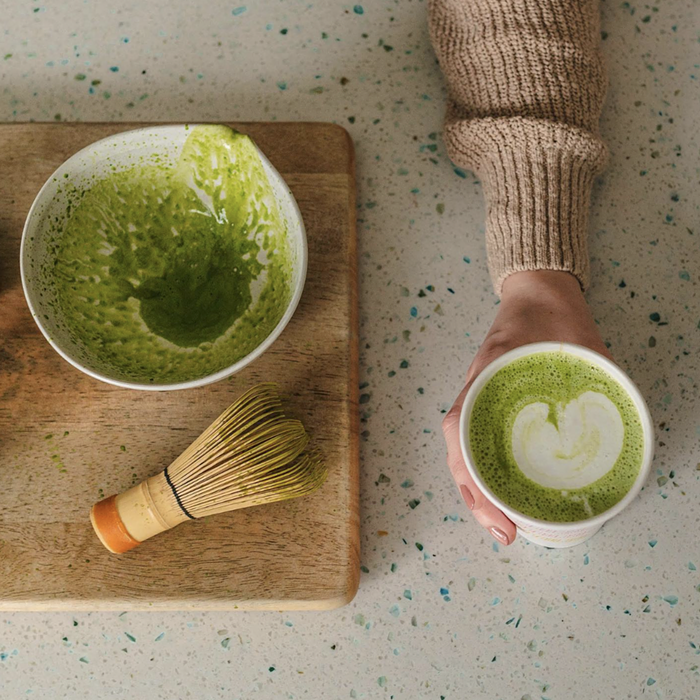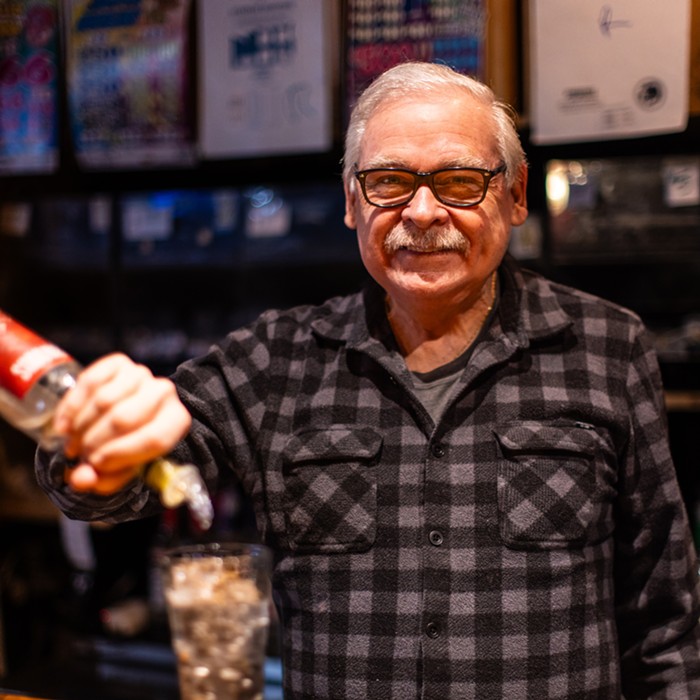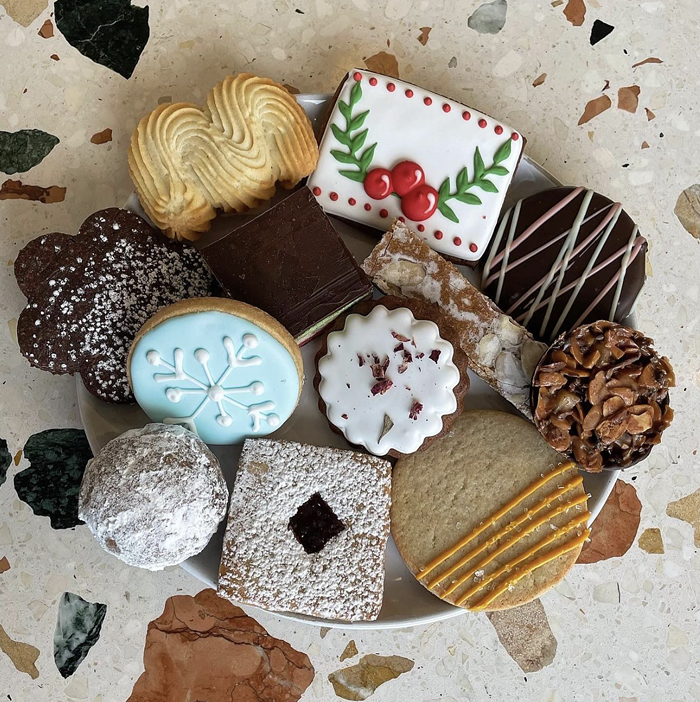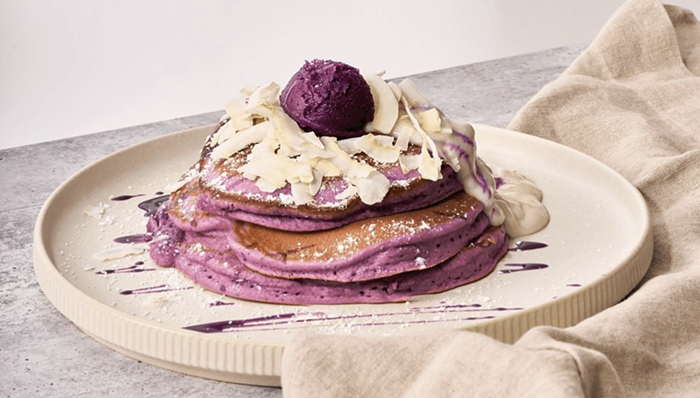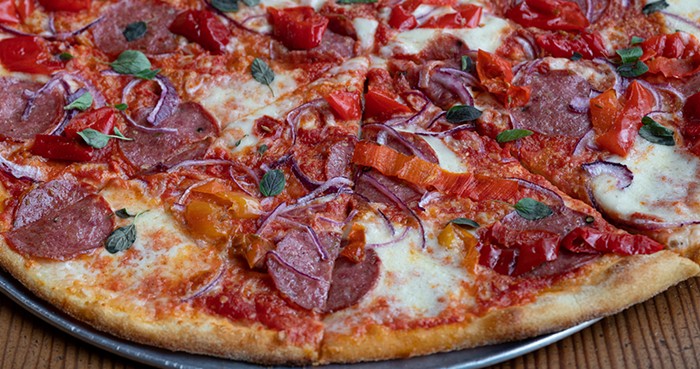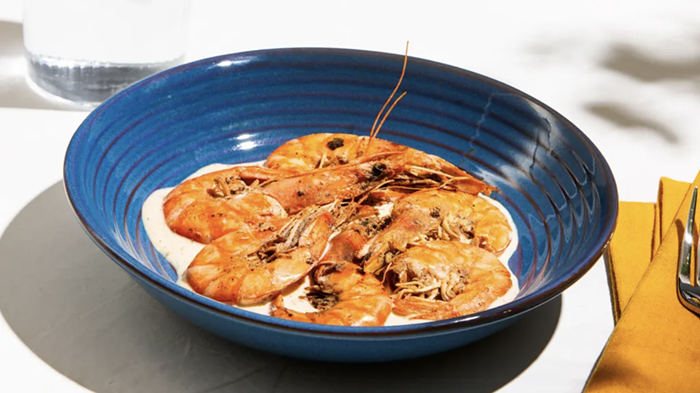It was after drinking a glass of aged sake that tasted like Spanish wine and right around when chef Mutsuko Soma handed me the fermented remnants of a jalapeño cheddar-cheese bagel that I started to think calling her latest Fremont venture a sake bar didn't quite work.
A laboratory of weirdly delicious ideas? A church to eccentric fermentation? "Sake bar" just seemed too reductive for Soma's follow-up to Kamonegi, her wildly popular soba restaurant next door. Hannyatou has the trappings of a sake bar—a long list of expertly curated sakes, a 20-seat dining room that's 21 and over, an apropos name ("hannyatou" translates to "wisdom water," an old euphemism that Japanese monks supposedly used for sake). But food intentionally plays as big a role as sake.
"I think living in the Pacific Northwest, Seattle people should drink more sake," Soma recently told me. "Compared to wine, almost all sake is food-friendly. You can [drink sake] with stinky foods, with weird foods... stinky fish, squid. Wine fights a lot, sake doesn't."
Hannyatou is like a research facility for small plates of Soma's wildest ideas, which won her a spot on Food & Wine's list of best new chefs of 2019. Soma excels at combining her obsessive attention to craft with her wild imagination. Eater's Bill Addison mentioned her "unorthodox but brilliant combinations" when he named Kamonegi among the 18 best new restaurants in America. The menu at Hannyatou includes seafood dishes like Hama Hama oysters served with homemade vinaigrettes ($2.50 each) and asparagus with sea scallops ($9), as well as some of Soma's more unusual ideas: ice cream made with sake sediment ($8) and one of the strangest things I have ever eaten—the fermented remnants of a jalapeño cheese bagel that was turned into miso.
Soma ground up the bagels with koji (a Japanese fungus) and let the mixture sit in a warm place for four weeks. The deliciously weird result is a brownish liquid that resembles miso but tastes just like a jalapeño cheese bagel, and it's served with salmon that's also been cured in koji ($9).
And then there's the sake, a curious and delicate selection curated by Soma and her business partner Russell King. I asked Soma to put together a flight of sakes for me, and after just three cups, I realized I knew almost nothing about Japan's staple alcohol.
I started with Kinka from Japanese brewery Tedorigawa; it was like the essence of fresh fruit encapsulated in a glass with notes of green apple in a creamy soft mouthfeel. Next was a cloudy cup of Junmai Nigori from Nakao Brewery that had a complex brown-rice flavor mixed with notes of ripe melon and coconut. Delicious. Finally, I tried a three-year-old Heirloom Yamahai Genshu from the Tamagawa brewery. Yamahai is a traditional style of sake brewing where natural yeast infects the rice, and the brewer (the toji) performs minimal post-processing. The result is a sake that's funky, earthy, and woody, with rich nutty notes. Tamagawa's Yamahai evoked the flavor of Spanish sherry, not at all what I imagined sake could taste like.
As Soma poured my Yamahai Genshu, she helped herself to one, too. Lifting the glass, she closed her eyes, sipped, and then opened her eyes with a smile. "You can drink this all day," she said. King interjected: "You can't. You have soba to make."
Hannyatou feels less like a sake bar and more like a showroom for one of Seattle's hardest working chefs. I'll drink a sake to that.


